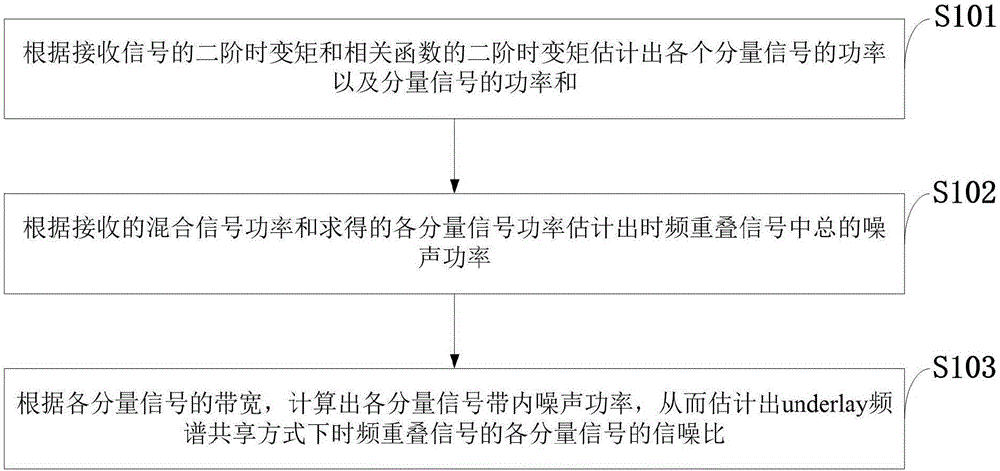Method for estimating signal-to-noise ratios of component signals of time-frequency overlap signal in cognitive radio
A technique for cognitive radio and signal-to-noise ratio estimation, applied in the field of cognitive radio
- Summary
- Abstract
- Description
- Claims
- Application Information
AI Technical Summary
Problems solved by technology
Method used
Image
Examples
Embodiment Construction
[0032] In order to make the object, technical solution and advantages of the present invention more clear, the present invention will be further described in detail below in conjunction with the examples. It should be understood that the specific embodiments described here are only used to explain the present invention, not to limit the present invention.
[0033] The application principle of the present invention will be described in detail below in conjunction with the accompanying drawings.
[0034] Such as figure 1 As shown, the method for estimating the signal-to-noise ratio of the time-frequency overlapping signal component signal in the cognitive radio provided by the embodiment of the present invention includes the following steps:
[0035] S101: Estimate the power of each component signal and the power sum of the component signals according to the second-order time-varying moment of the received signal and the second-order time-varying moment of the correlation funct...
PUM
 Login to View More
Login to View More Abstract
Description
Claims
Application Information
 Login to View More
Login to View More - R&D
- Intellectual Property
- Life Sciences
- Materials
- Tech Scout
- Unparalleled Data Quality
- Higher Quality Content
- 60% Fewer Hallucinations
Browse by: Latest US Patents, China's latest patents, Technical Efficacy Thesaurus, Application Domain, Technology Topic, Popular Technical Reports.
© 2025 PatSnap. All rights reserved.Legal|Privacy policy|Modern Slavery Act Transparency Statement|Sitemap|About US| Contact US: help@patsnap.com



